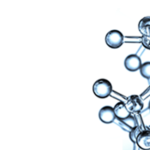Season 1 – Episode 4 – Ethical and Policy Issues in Chimeric Research
This episode discusses chimeric research, why it is important to scientific progress, and current recommendations for addressing the ethical and policy issues raised by chimeric research.
Episode Transcript
Click to expand/collapse
Daniel Smith: Welcome to On Tech Ethics with CITI Program. Today’s guest is Josephine Johnston. Josephine is the director of research and a research scholar at the Hastings Center, and a lecturer at the University of Otago’s Bioethics Center. We are going to discuss chimeric research, why it is important to scientific progress, and its core ethical and governance issues. We will then go over Josephine’s latest research that seeks to clarify the ethical and policy issues raised by chimeric research, and some recommendations that resulted from that research.
Before we get started, I want to quickly note that this podcast is for educational purposes only. It is not designed to provide legal advice or legal guidance. You should consult with your organization’s attorneys if you have questions or concerns about the relevant laws and regulations discussed in this podcast. In addition, the views expressed in this podcast are solely those of our guests.
And on that note, I want to welcome Josephine onto the podcast. Hi Josephine.
Josephine Johnston: Hi. Thanks for having me.
Daniel Smith: Absolutely. So just to get started, I briefly introduced you, but can you tell us a bit more about yourself and what you currently focus on at the Hasting Center?
Josephine Johnston: Sure, thank you. So I am a New Zealander, which is perhaps apparent from my accent. I have worked at the Hasting Center though for almost 20 years as a researcher, and in the last 10 years also as director of research. My background is in law and bioethics. I’ve focused over the years on quite a range of issues, but a lot of them looking at the implications of new technologies, especially genetic technologies in science and medicine. Some work in reproductive ethics and reproductive technologies, some work on now looking at applications of genetics in the clinic, and some issues around science governance on stem cell research, which is connected to the topic that we’re talking about today.
Daniel Smith: You mentioned that you focus on various technologies, and we’re here today to talk specifically about chimeric research. So just for context, can you define what chimeric research is for our audience?
Josephine Johnston: Sure. So this is a term that’s used for a really broad set of different kinds of studies. And quite often the word that people are actually a little bit more familiar with, although it’s not that commonly discussed, is the word chimera. And I’ll say in a minute why we prefer chimeric, which is an adjective. But in any case, chimeric studies are just studies where the cells from one non-human animal or human, are placed into another organism. And so a really common kind of chimeric animal used in science is a mouse with cells from another mouse in it. And lots of people actually are chimeric. They have various reasons why we have cells from another human inside of us.
So chimeric animals can be interspecies. So one mouse with cells from another mouse integrated into it or located in a particular organ or part of its body, but they can also be interspecies. And so the kind of research that we’ve been focusing and in the project that I’m going to talk about today, is where human cells are inserted into non-human animal embryos or fetuses inside gestating or into living non-human animals. And so that’s a subset of this broader category of study where just cells from one animal are transplanted into another.
Daniel Smith: Thank you for that definition, Josephine.
Before we get into your current research, I have a few more basic questions about chimeric research. So now that we have a better understanding of what chimeric research is, can you share a little bit more about why chimeric research is important to scientific progress, and perhaps share an example or two of a current chimeric research project?
Josephine Johnston: Sure. So chimeric studies are used at all different levels of science. So there’s a basic science use; we are just trying to understand how cells behave, how organs form, how systems form and behave. You might transplant cells from one animal into an other animals embryo in a dish and just watch those cells develop. So there can just be very bunch of basic science function, trying to understand how cells behave and how systems develop.
And then all the way through to creating model organisms for human disease and human function. So we might try to create a mouse with human cells in its liver or kidney as a way to make a more accurate model for studying human diseases and human biology. And then some of that research is very much with an eye to things like being able to one day generate, for instance, human kidneys for transplantation inside a non-human animal such as a livestock animal like a pig. So some of it is very much looking at practical application and use, and others of this is very much so basic science, trying to understand biology.
Daniel Smith: That’s really interesting. So obviously when it comes to this type of research, there are ethical questions involved. Can you share a bit more about the core ethical and governance questions related to this type of research?
Josephine Johnston: Sure. So insofar as this research involves non-human animals, it raises all of the ethical issues and governance and oversight issues associated with using non-human animals in scientific research. And that’s the sort of core of most of the issues associated with these studies. Somewhat separately, which is, I’ll say later, is not a great thing, we’ve been thinking about, in governing and overseeing this research, under a slightly different umbrella, which is that we’ve been seeing it as a form of research using human cells and especially human cells derived from human embryos. And so the whole debate in governance and oversight approaches that were developed in the wake of the derivation of human embryonic stem cells from human embryos. And that’s obviously a big topic with a lot of different aspects to it in the US context, but also in other countries.
So there’s a line of governance in oversight and ethics issues that are associated with the fact that chimeric studies are one of the studies that are done with cells taken from or derived from human embryos, so embryonic stem cells. Those stem cells, pluripotent stem cells, are used in chimeric studies quite often. And so there’s a set of issues that have come up on account of that connection that are also a part of the governance picture here.
Daniel Smith: So what has been the global response to address some of those ethical issues?
Josephine Johnston: So if you do look in the literature and if you look in guidelines and regulations both in the US and international ones as well as some in specific countries, where you will actually see the word chimera, usually with the chimera, that will be in the context of governance for human embryonic stem cells. So often countries will have sets of guidelines or rules, there are also international guidelines. In the US there are guidelines from NIH, but also from the National Academies of Sciences. And then we also look at international guidelines from the International Society for Stem Cell Research. These different organizations have guidelines or recommendations or structures for guiding research that involves human embryonic stem cells.
And within that, that’s where you’ll see specific rules about the creation and use of stem cells in non-human animals. And those are called often chimeras. And there isn’t really a distinction initially made between the creation of a non-human animal embryo that has some human cells in it, where we’re observing development in the lab or in vitro, versus where we’re actually creating animals that have human cells in one part of them, like a teratoma or in an organ or in a particular part of the body, so in the central nervous system. So that’s where you’ll see the word chimera mentioned. And often it will be a set of prohibitions or limitations around how many human cells are, or what percentage of human cells there are in the resulting non-human animal, or the extent to which those cells contribute especially to the central nervous system. So we have prohibitions often or recommendations against research, for instance, where there will be a substantial contribution to the non-human animals brain.
And it’s very tricky actually if you’re on an oversight committee to know how to implement a guideline like that, because a substantial contribution. And what does that mean? The studies so far have actually not been able to get a very substantial integration of humans neural cells for instance, in the brains of non-human animals. But what does 7% substantial, 20? One of the reasons we did this study is that we had firsthand experience, but also you could see, and others were also sharing with us, that it was tricky to try to actually implement some of these guidelines and recommendations because it wasn’t entirely clear what was being prevented or avoided by some of the rules, which were generally around the use of chimeric studies with non-human primates. So there’s a lot of discomfort or extra attention where we’re putting human cells into non-human primates.
There’s been quite a bit of emphasis on not ever allowing the resulting animals, whether they’re non-human primates or anything else, to breed. And I guess there, the idea being you wouldn’t want an animal that was inadvertently or intentionally made to be able to create human gamuts. Human sperm or human eggs all sounds very science fiction, I know. But this is the kinds of prohibitions or recommendations that researchers and oversight committees have been dealing with.
And then some that are around how much contribution to the non-human animals brain would we want to allow from human cells. So there’s three categories that have gotten extra attention in the existing guidance or recommendations or regulations, but not a lot of explanation behind that about exactly what we are worried about or how to implement those, I don’t want to say prohibitions, but more recommendations for avoiding that kind of study. So I know it sounds confusing and I think that’s because I’ve been on one of these oversights committees, and I did find it quite tricky to know how to actually implement some of these recommendations.
Daniel Smith: So I know the research project that you’ve been alluding to set out to clarify some of those ethical policy issues. But before we into that and some of the findings and recommendations that you have based on that research, can you just tell us a bit about that research project and just provide some background information on it?
Josephine Johnston: Sure. So I was fortunate enough to lead a project with [inaudible 00:12:28]; we were the three co-PIs of a project that was funded by the National Institutes of Health from the National Human Genome Research Institute portfolio. So this is what’s sometime called an ELSI project, a project looking at the ethical, legal and social implications of genomics, because there’s a genetics element to all of this. And Karen, Ensu and I led a team with researchers from the Hasting Center where Karen and I work, and also researchers from Case Western Reserve University’s Department of Bioethics, which is where Ensu was at that time. So Carolyn Newhouse, Patricia Marshall and Caitlin Craig, as well as Meg Matthews were on that team.
And as part of that research project, we created a working group of external experts. So people who have firsthand experience with some of these issues or who have researched or done scholarly work in depth on some of the components of this puzzle of how to think about and how to clarify the efforts and oversight of chimeric studies. So we created quite a large work group.
And we have various outputs from that research, but one of them is a special report, a Hasting Center report, which is a peer review journal. And that special report is available on our website. And you can really review some of the detail of the study that we undertook.
Daniel Smith: I’ll definitely include a link to the full report in our show notes. But just to give our audience a high level understanding of your findings, what were some of the recommendations that resulted from this collaborative research project?
Josephine Johnston: So we have 10 main recommendations, and they really span quite a broad range of issues. So some of the issues that we address through the recommendations are probably best understood as conceptual issues or language questions. And then we have recommendations about where we think the focus of ethics oversight and research really should sit inside of this area. And then all the way things about how we hope oversight can be improved around public communication. So it’s quite a range of 10 recommendations. We could talk about all of them, but we might not have time for that. But I can go into some of the ones that might be of most interest to listeners.
Daniel Smith: That’d be great.
Josephine Johnston: So one of the ones that I think could be understood as a kind of conceptual question is, that we make a recommendation that there’d be some attention paid to the language that’s used to talk about this kind of research. And there are a few different aspects to that. One of them is the word chimeric or chimera. So many of your listeners will know that a chimera is a kind of monster in Greek mythology. Often when news articles write about chimeric studies, they’ll use images of Greek urns and things of this monster. And we feel like that’s a pretty obscure and frightening word that actually suggests something ethically. It suggests that we are creating monsters, that we are doing something scary and bad. And while we think that there might be some issues people would have with this research, we don’t want to predetermine those just in the terminology.
So we tried to come up with a completely different word for this kind of research, but in the end we decided that it was more realistic to just try to move away from the word noun, chimera, and talk more about chimeric studies, and then be more specific. So we are creating a chimeric mouse with human brain cells. Or we are creating a chimeric mouse with other rat cells in it; being really specific about the kind of non-human animal that you’re discussing and the extent to which it’s a chimeric, meaning it’s got more than one type of cell. And it really also allows for differentiation. If you use the word chimeric to talk about a chimeric embryo that you’re studying in the lab in a dish, which is pretty different, we think raises different questions ethically than if you are studying an actual living animal.
So that was one of our recommendations. Sometimes in this discussion the word humanization is used, so people will say we humanized the mouse, by which they really often just mean that some human cells were transplanted into that mouse and were integrated and were functioning. But also, it’s another word that’s has fairly dramatic connotations to a non-scientific listener and suggests a conclusion ethically or morally that we think should not be presupposed. So we’ve discouraged the use of words like humanization that we think don’t really clarify, but actually confuse and perhaps even add heat but not light and try to be more specific. We added these kinds of human cells to this kind of non-human animal for this effect. So just being more descriptive. So that’s a language concepts set of recommendations.
I think that the most important recommendation that the report makes is that ethical and policy analysis, as well as governance and oversight of this area, focused on the welfare of the non-human animals involved. And this may seem kind of obvious I think, about what I’ve been saying about this research, but I can’t overemphasize the extent to which actually a lot of the governance and oversight of this area right now is focused primarily on the fact that human cells are involved, and what that might mean in terms of the ability to do things like create non-human animals that are actually human in some sense morally or even potentially legally. I don’t know. But there’s a lot of emphasis on the human interest at stake in this research. And really in the literature very little about the fact that this is one more kind of non-human animal research and that all the welfare questions attending non-human animal research are very live in this research too, and need to be at the forefront of our thinking on it. So that’s kind of the biggest recommendation that’s really about the ethical issues.
Daniel Smith: I know in the report too, it does touch on the importance of focusing on respect for humans as well. So can you talk about that too, and what your thinking is currently on that?
Josephine Johnston: Yeah. So some of the issues that, like I said, that have been the preoccupation of the ethics literature on this area, have been about what does it mean for humans to create non-human animals that have human cells in them? Would that result in these non-human animals actually being sort of human or more human or actually counting as human? And those kinds of questions about what we are actually creating. But also I think a lot of the emphasis honestly has been around the fact that goes back to this connection to embryonic stem cell research and people who have a moral objection to the use of human embryos and research and those kinds of arguments. A lot of chimeric research is caught up in that debate.
And so in our group, the report that we’ve linked to is co-authored, the main lead article, by most of the people who were in our work group. We had almost unanimous agreement to the document and co-authoring. We couldn’t get those issues… Those kinds of moral dilemmas or moral concerns about making non-human animals more like humans or that using embryonic stem cells that come from human embryos, those didn’t land very heavily with the members of the work group. But what we were able to agree on was that there are people who are very much object to embryonic stem cell research, and therefore to this kind of research. And so far as it’s connected to embryonic stem cell research, they may also have religious or spiritual moral objections to mixing human cells with non-human cells or creating these mixtures with that kind of species boundaries crossing. We know those people exist in our society.
And in order to respect them as individuals, it makes a lot of sense to be able to provide very clear mechanisms for those people to not have their cells used in this kind of research. So at a very sort of strong minimum, we really need to be clear in communicating with people whose cells might be collected, and very clear with allowing them ways to opt out of having their cells used in these kinds of studies, even if they might be okay about their cells being used in a different kind of study that doesn’t involve mixing human and non-human animals together. So that’s a really important way to respect people’s individual moral beliefs and to make sure that they have ways of opting out.
Daniel Smith: So I know we’ve talked about using descriptive language, focusing on animal welfare, and also maintaining that respect for humans. And I guess that leads me to one of my final questions for you, which is, what can people involved in chimeric research do to better address the ethical and governance challenges raised by this type of research?
Josephine Johnston: So one of the other recommendations we make really gets at the fact that some chimeric studies cross different oversight structures that we have in many universities and research institutes. So sometimes this is research that goes before an IRB, not always. And an IACUC, an institutional animal care and use committee; and also potentially what’s called an ESCROC, escrow and embryonic stem cell research oversight committee. So at least those three may be involved, sometimes more. That’s complicated from the perspective of a researcher potentially and maybe also from the perspective of an institution.
Sometimes research, you might think it would go to an IRB, but they might not actually be involved because for instance, studies using human embryos don’t always go to an iRB. So it can be a complicated oversight picture. And so trying to make sure that those different committees have ways to communicate efficiently between each other on particular studies makes it easier for the researcher and easier for the committees to really know that the studies being looked at in the kind of 360 degree way that we need it to be looked at.
But we don’t want those to be too siloed. So we have a recommendation around creating communication pathways between oversight committees within institutions, and then also creating a forum where oversight professionals at different institutions can get together and talk about challenges they’re facing. Because it’s a fairly fast moving area of research at the moment, and so we would expect that science, as it develops, it may raise different permutations or combinations of some of these questions. And so providing some kind of national forum where people can get together and talk frankly about what they’re seeing and what they’re struggling with, and share innovation that they’re coming up with to try to make sure that the oversight is both comprehensive but also efficient and not too burdensome for those involved. So at the institutional level and at the national level, having communication between people who are involved in this kind of oversight so that it’s not done in a siloed and black box way. Those are a couple of the recommendations we make that are to do with that area.
And then the final thing I think is that we really want to shed some light into this area. So it’s pretty easy for research that involves human embryonic stem cells, research that involves non-human animals, and this of course is often the combination of those, to just not be discussed much publicly. There are good reasons why institutions and individual scientists are a bit weary about discussing some of those kinds of studies in public. And the thing is that that then means that the public is left behind in the discussion of these studies, and can be then quite surprised to know what might be happening or where science has progressed to.
So we are really in favor of finding safe but also very clear ways for researchers to communicate about the studies they’re doing, what they’re actually doing, what they’re not doing, why it matters, what they’re learning, what alternatives they’ve explored, and so far as maybe their alternatives to some of the whole animal studies that people are doing, to really try to discuss that a bit more publicly. Because it doesn’t help anyone really for that to be done without public communication, at least on some level.
Daniel Smith: Those are really helpful recommendations. And like we said, that was just a high level overview of the 10 recommendations that Josephine and her research collaborators laid out in the research report on the Hasting Center’s website. I definitely encourage you to check out that full report, as it’s linked in our show notes.
So on that note, aside from that research report and going back to some of those recommendations that you just went over about how folks can better address the ethical and governance challenges raised by chimeric research, are there other additional resources out there that our listeners should be aware of, where they can learn more about this topic, get involved, and continue to navigate this rapidly evolving area?
Josephine Johnston: Sure. Like many people who are in institutions will know about embryo stem cell research oversight committees, and of course IACUC’s, another layer to that would be that there are some other reports. There was a recent National Academies consensus report, or look at, a subset of this research that’s in neuroscience. And so that report, we can put a link to that in the show notes as well. There’s also the longstanding National Academies guidelines on embryonic stem cell research that have bits about chimeric studies. The International Society for Stem Cell Research has more recently updated guidelines that also include some stuff just about chimeric studies. So there are a few resources out there that are focused on chimeric studies that might be obvious and of interest to listeners.
Daniel Smith: Excellent. And as Josephine mentioned, I’ll include those resources in the show notes for you all to explore.
Josephine, I want to thank you again for joining me today and for discussing your latest work on chimeric research. Be sure to follow, like and subscribe to On Tech Ethics with CITI Program for more conversations on all things tech ethics. I also invite you to review CITI Program’s newest course and webinar offerings regularly. Of note, you may be interested in our technology ethics and regulations course, which includes comprehensive modules on human animal chimera research and genome editing. All of our content offerings are available to you anytime through organizational and individual subscriptions.
How to Listen and Subscribe to the Podcast
You can find On Tech Ethics with CITI Program available from several of the most popular podcast services. Subscribe on your favorite platform to receive updates when episodes are newly released. You can also subscribe to this podcast, by pasting “https://feeds.buzzsprout.com/2120643.rss” into your your podcast apps.
Recent Episodes
- Season 1 – Episode 3: The Impact of ChatGPT on Academic Integrity
- Season 1 – Episode 2: Artificial Intelligence in Human Subjects Research
- Season 1 – Episode 1: Introduction to On Tech Ethics
Meet the Guest
Josephine Johnston – The Hastings Center
Josephine Johnston’s research focuses on the ethical, legal and social implications of emerging technologies. A lawyer and bioethicist by training, she is Director of Research and a Research Scholar at The Hastings Center, an independent bioethics research institute in Garrison, New York.
Meet the Host

Daniel Smith, Associate Director of Content and Education and Host of On Tech Ethics Podcast – CITI Program
As Associate Director of Content and Education at CITI Program, Daniel focuses on developing educational content in areas such as the responsible use of technologies, humane care and use of animals, and environmental health and safety. He received a BA in journalism and technical communication from Colorado State University.









